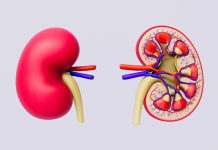
The No. 1 cause of death for COVID-19 patients echoes the way the 1918 influenza pandemic killed: their lungs fill with fluid and they essentially drown. This is called acute respiratory distress syndrome (ARDS).
ARDS is a manifestation of a condition known as a cytokine storm, in which the immune system overreacts and begins attacking the person’s own organs.
In ARDS, out-of-control white blood cells break down lung tissue and cause fluid to build up.
In a recent study at the University of Michigan, researchers found that a long-ignored white blood cell may be central to the immune system overreaction, the most common cause of death for COVID-19 patients.
They found that rod-shaped particles can take them out of circulation. This shows a new way of drawing immune cells out of the lungs might be able to prevent this outcome.
The study is published in the journal Science Advances. The lead author is Lola Eniola-Adefeso, University Diversity and Social Transformation Professor.
In the study, the team found a type of white blood cell called the neutrophil makes up 60% to 70% of intruder-eating “phagocyte” cells in humans.
Neutrophils aren’t specialized, which enables them to respond to many threats. But sometimes, that lack of specialization means they don’t know when to quit.
One of their actions is to emit signaling molecules called cytokines that tell cells to break down barriers and let blood and fluid into a problem site.
When that response turns bad, the neutrophils need to be stopped so that other cells can step in and repair the damage.
Previously, the team had shown that plastic microparticles injected into the blood of mice could distract neutrophils, diverting them away from areas of severe inflammation in their lungs.
In the study, they found that the rod-shaped particles might distract an out-of-control COVID immune response.
They found that when they offered rods to different phagocytes, 80% of the neutrophils ate them, whereas only 5% to 10% of other phagocytes did.
The comparisons included macrophages, another cell that eats intruders, and dendritic cells, which capture intruders and then show the other immune cells what to look for.
The team is currently exploring whether neutrophil-distracting particles can be made from medications.
They hope that it may prove useful in the fight against COVID-19.
Copyright © 2020 Knowridge Science Report. All rights reserved.



